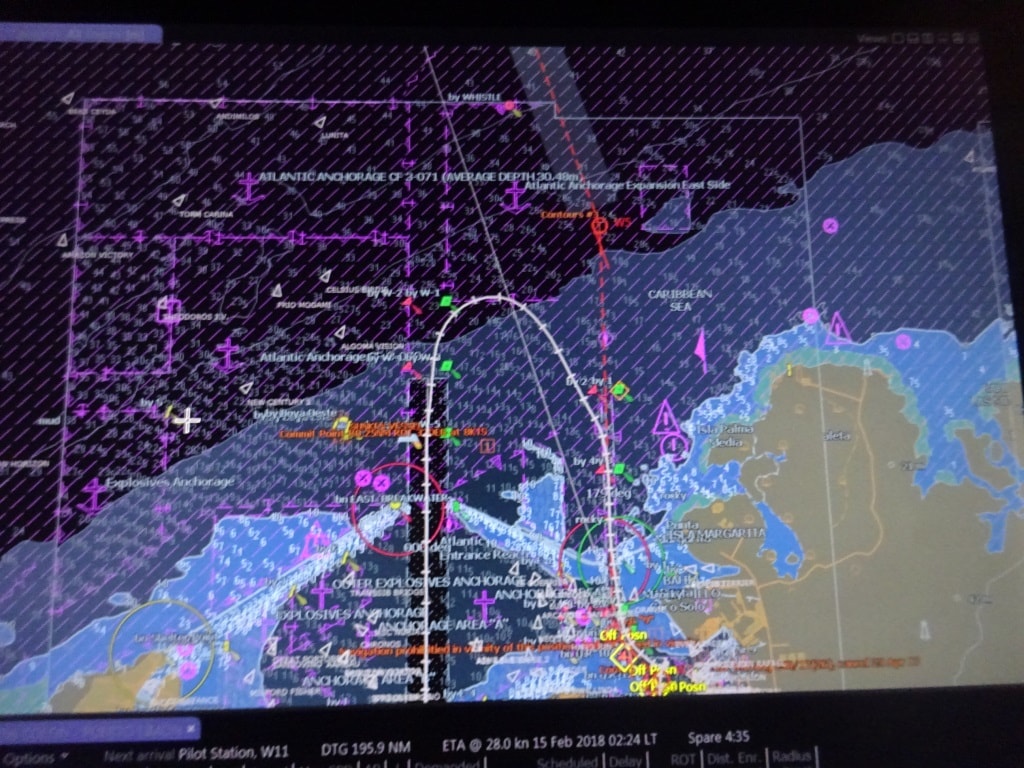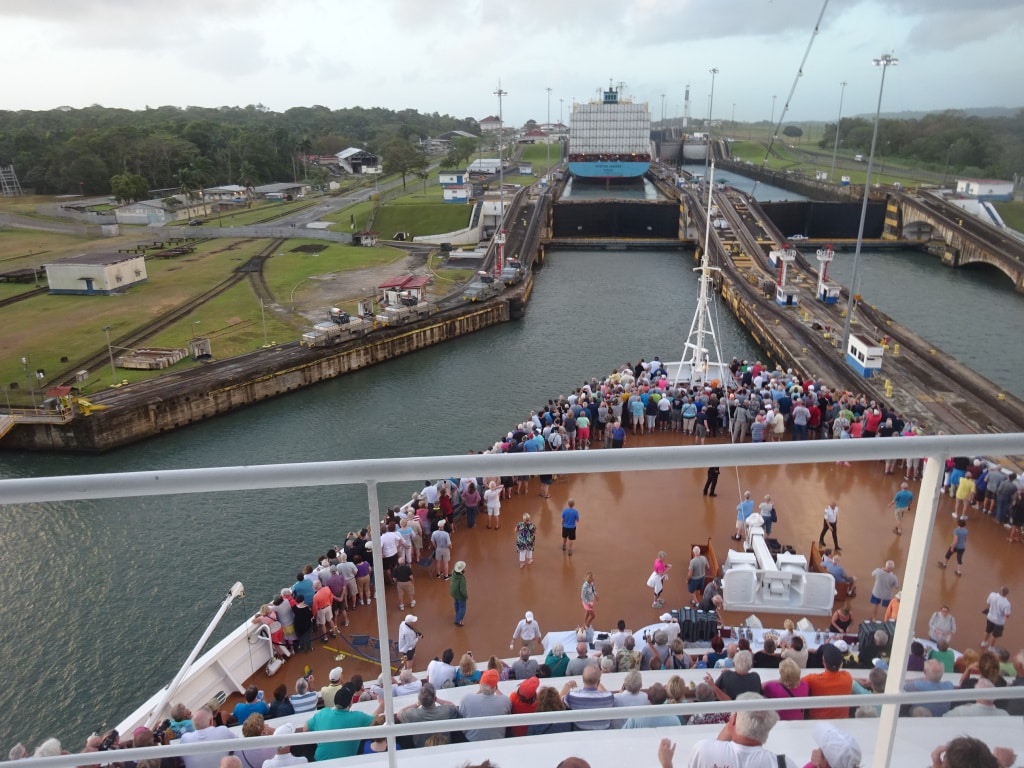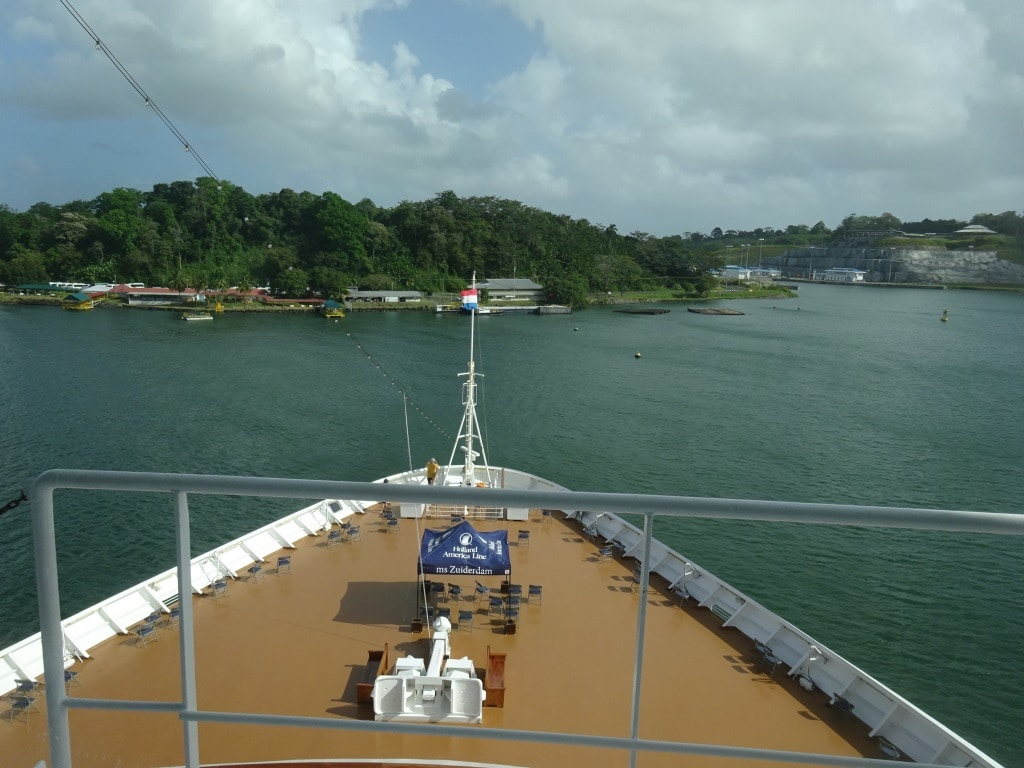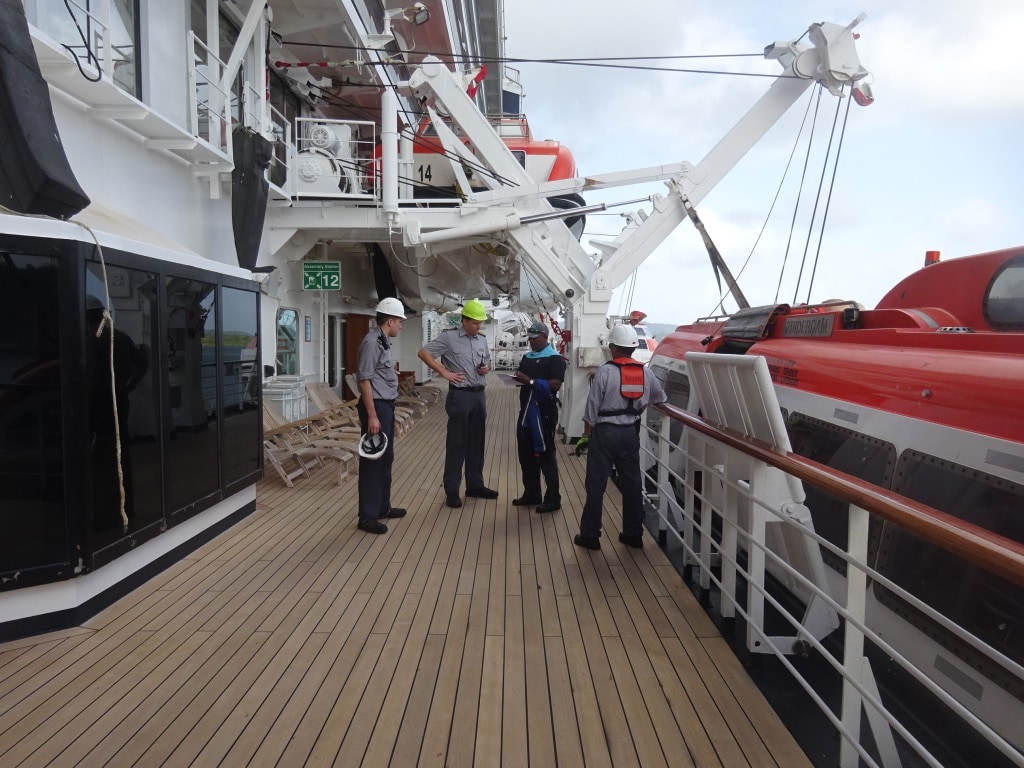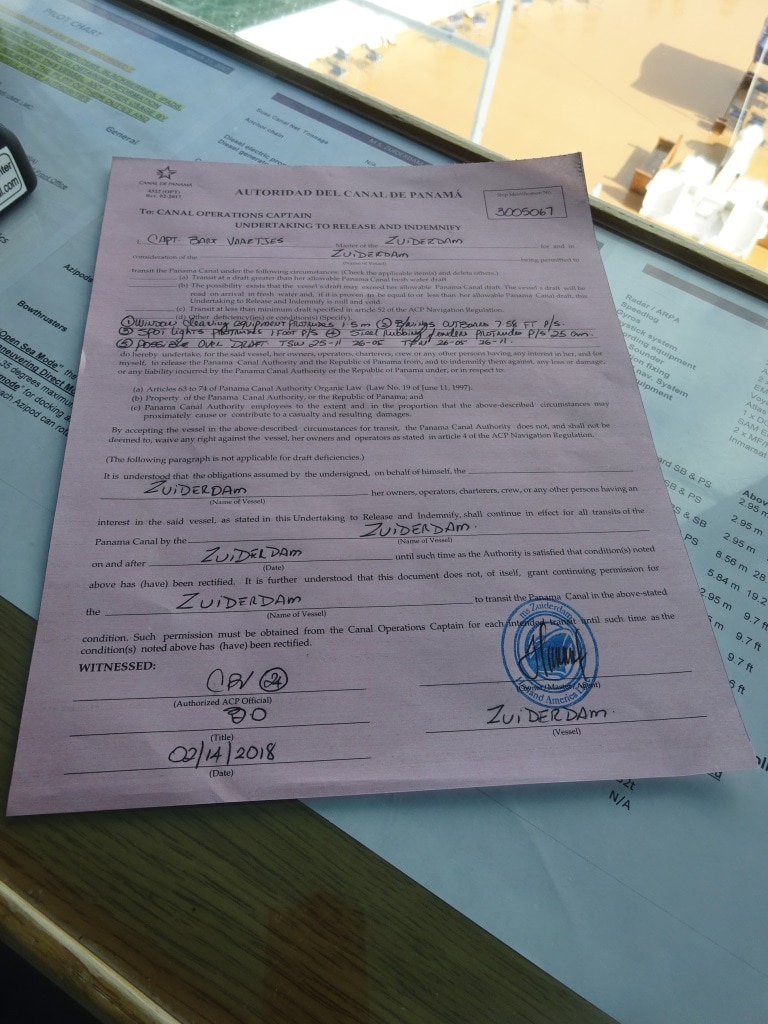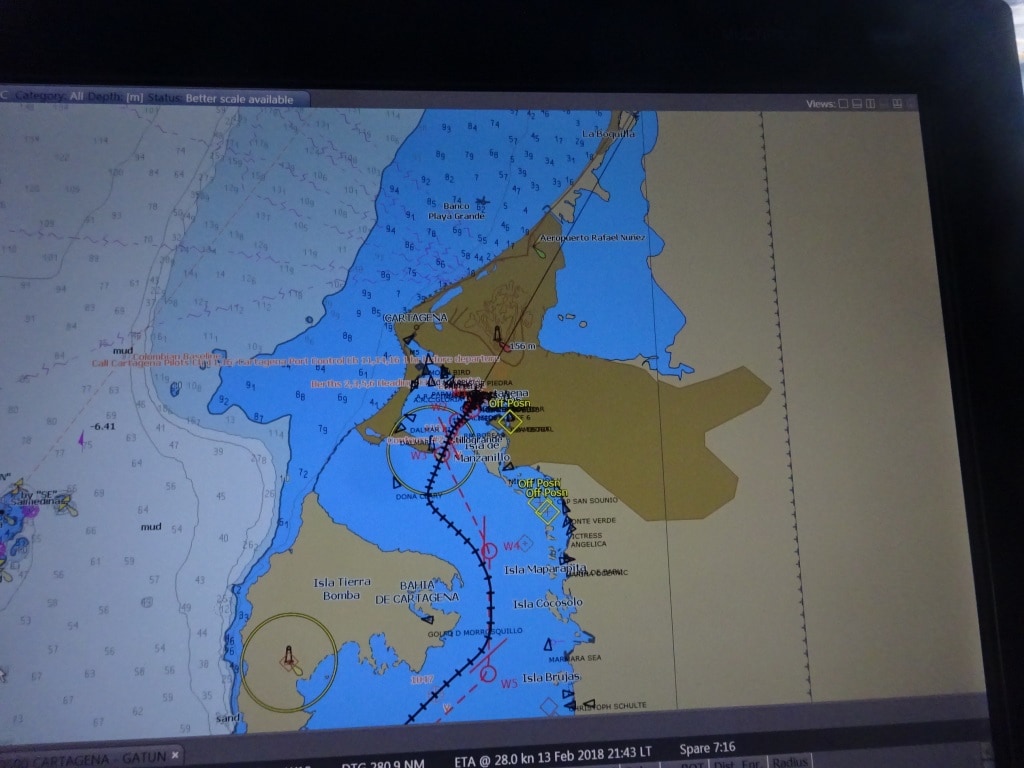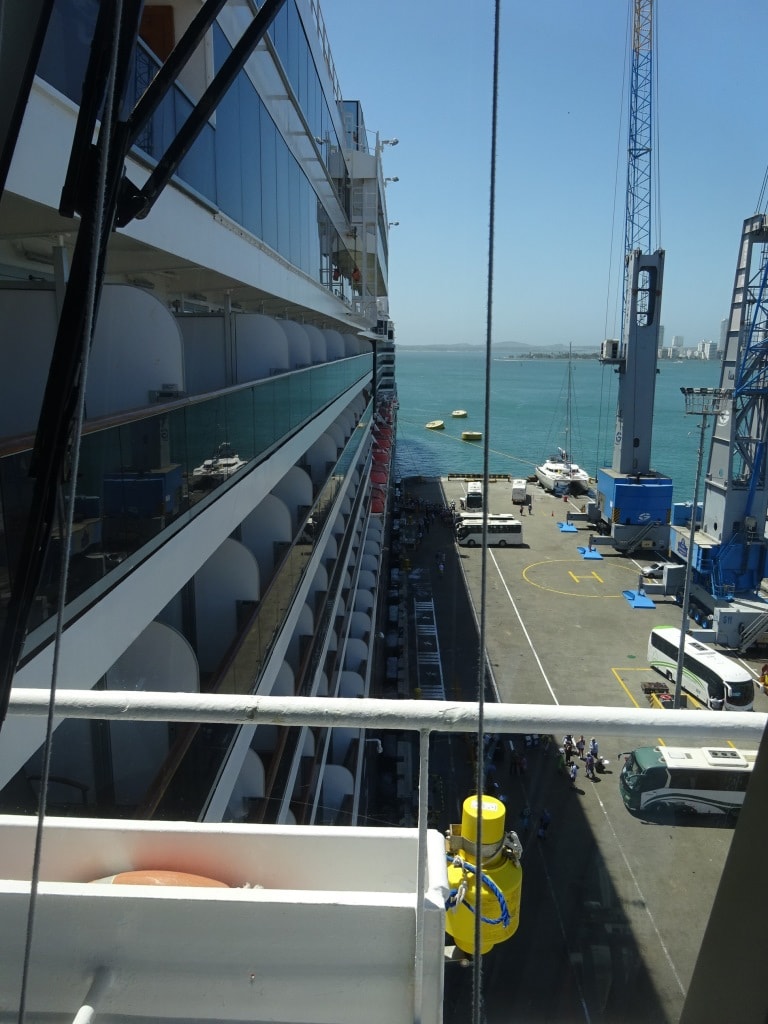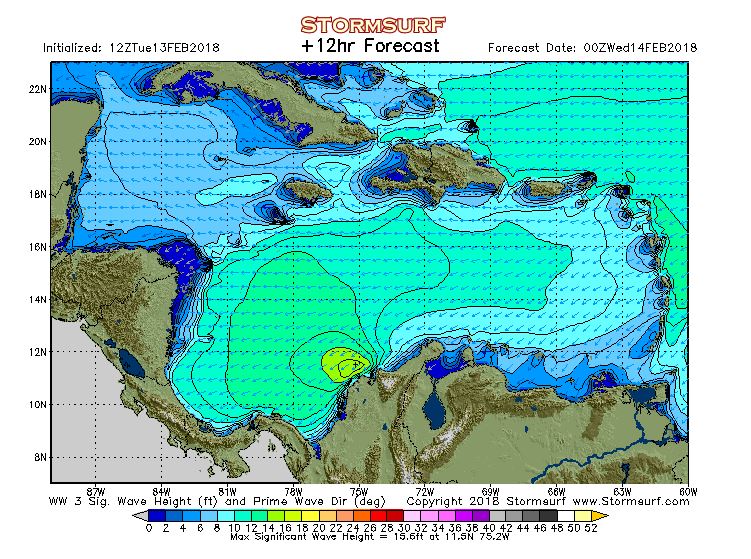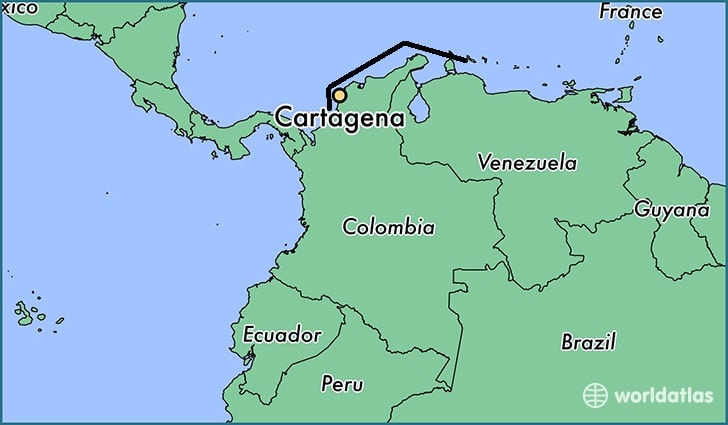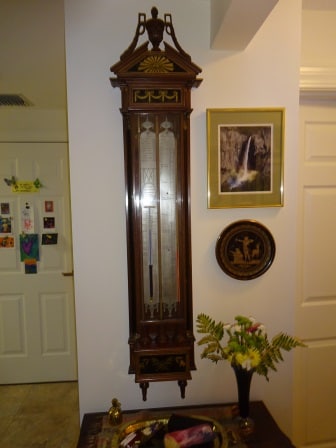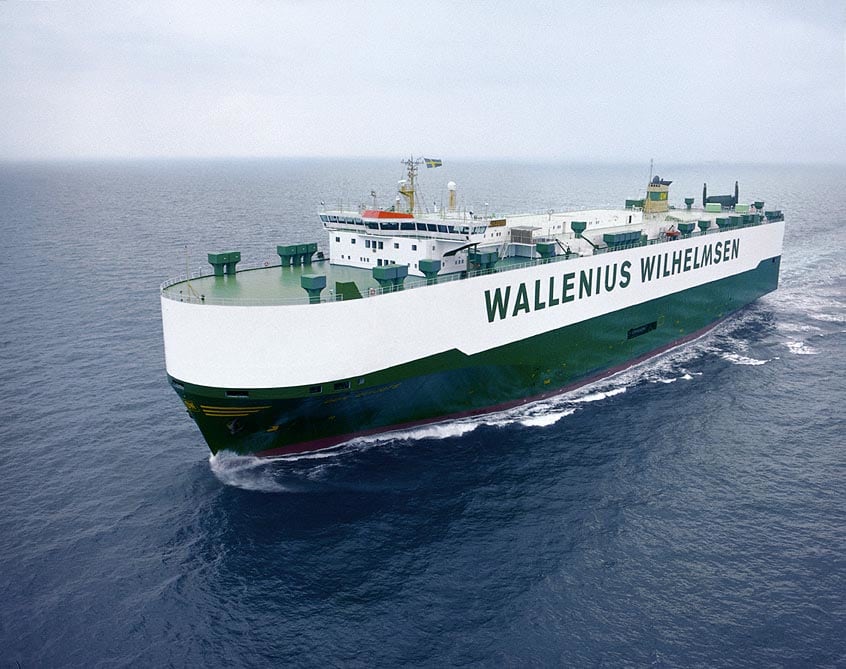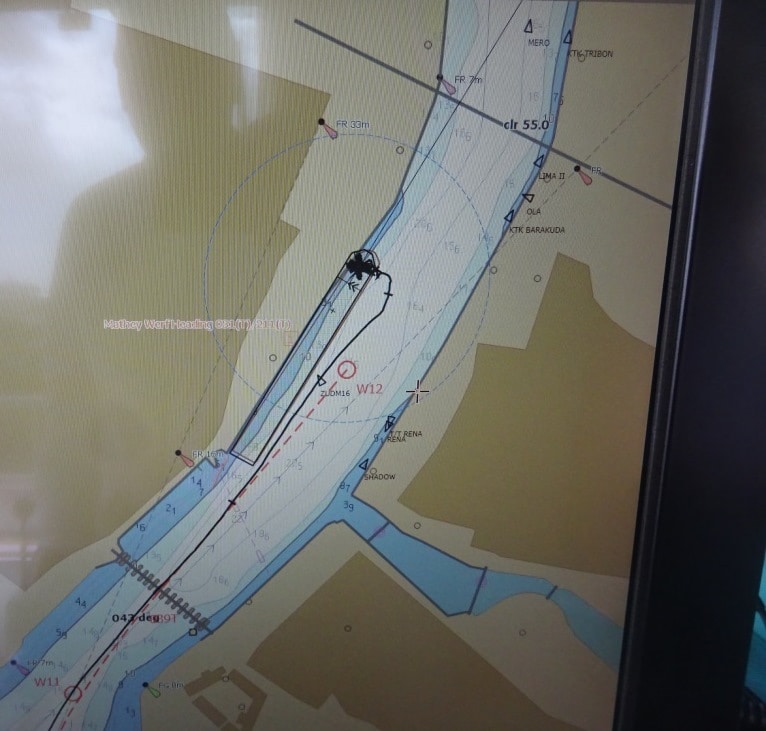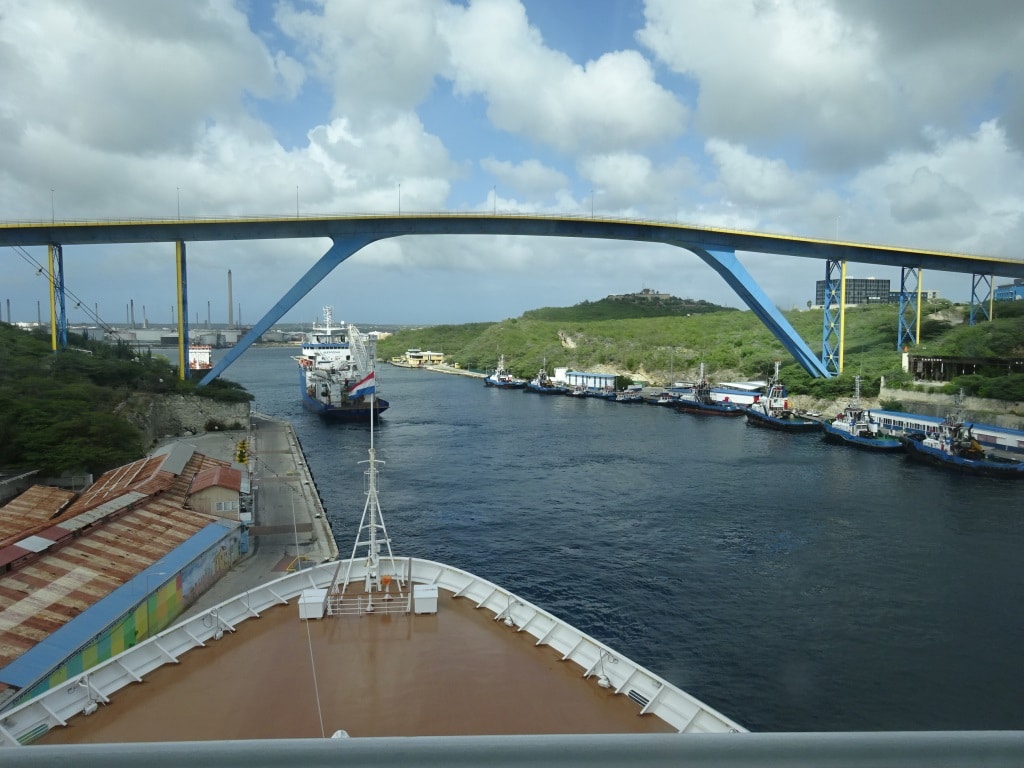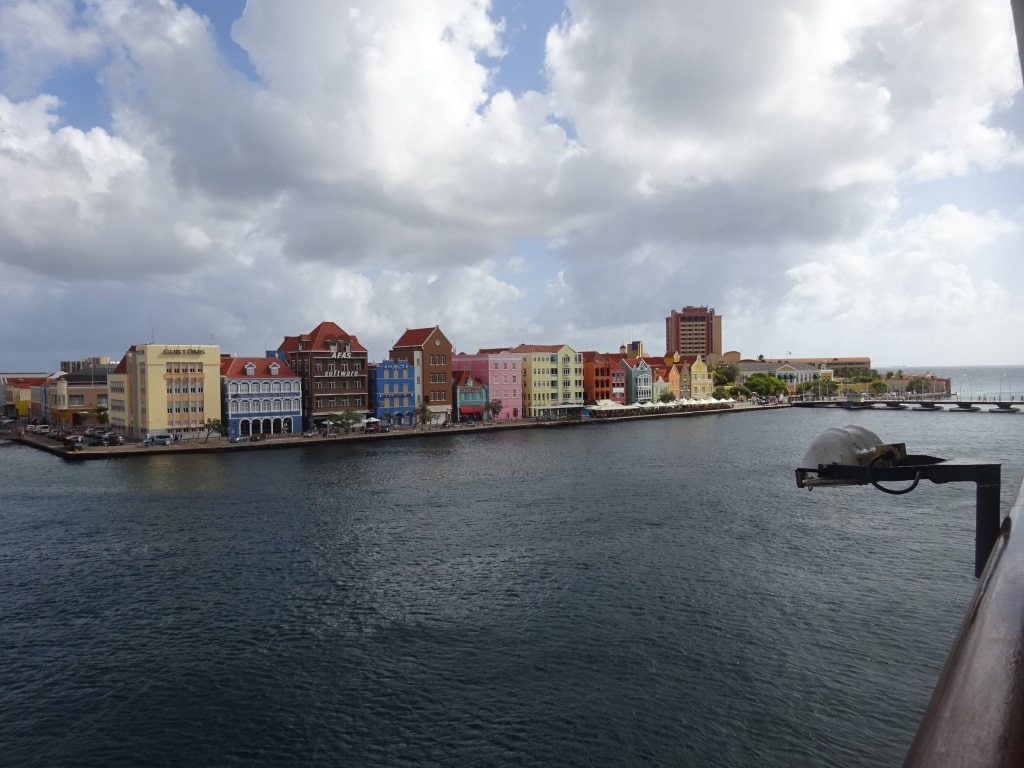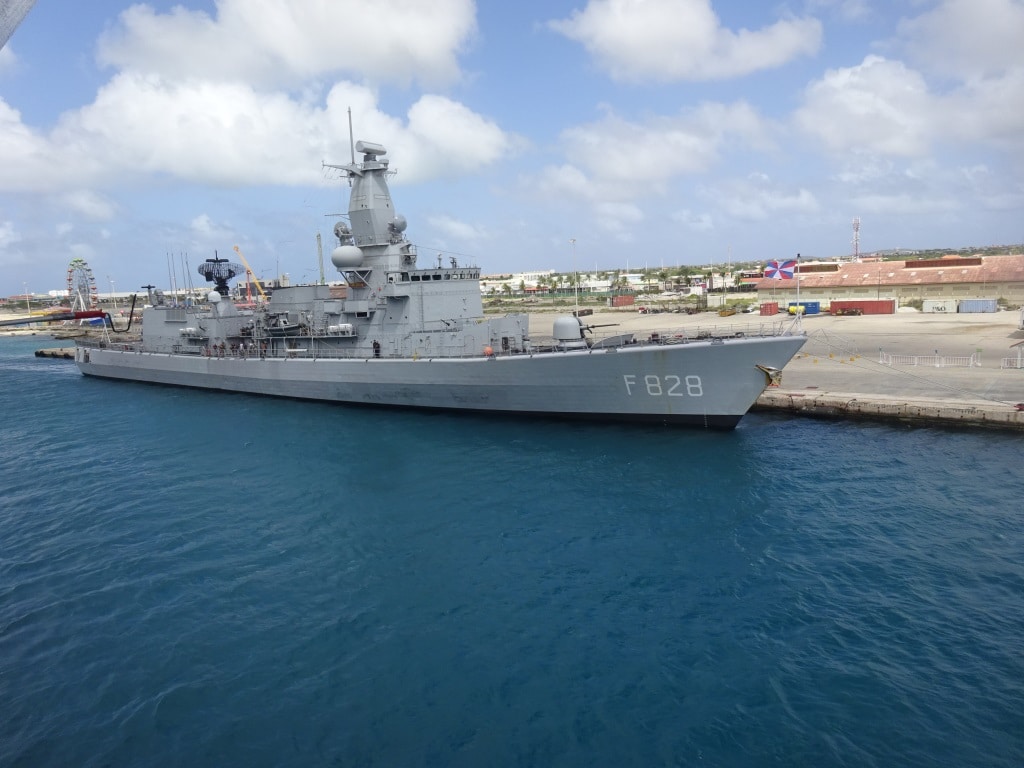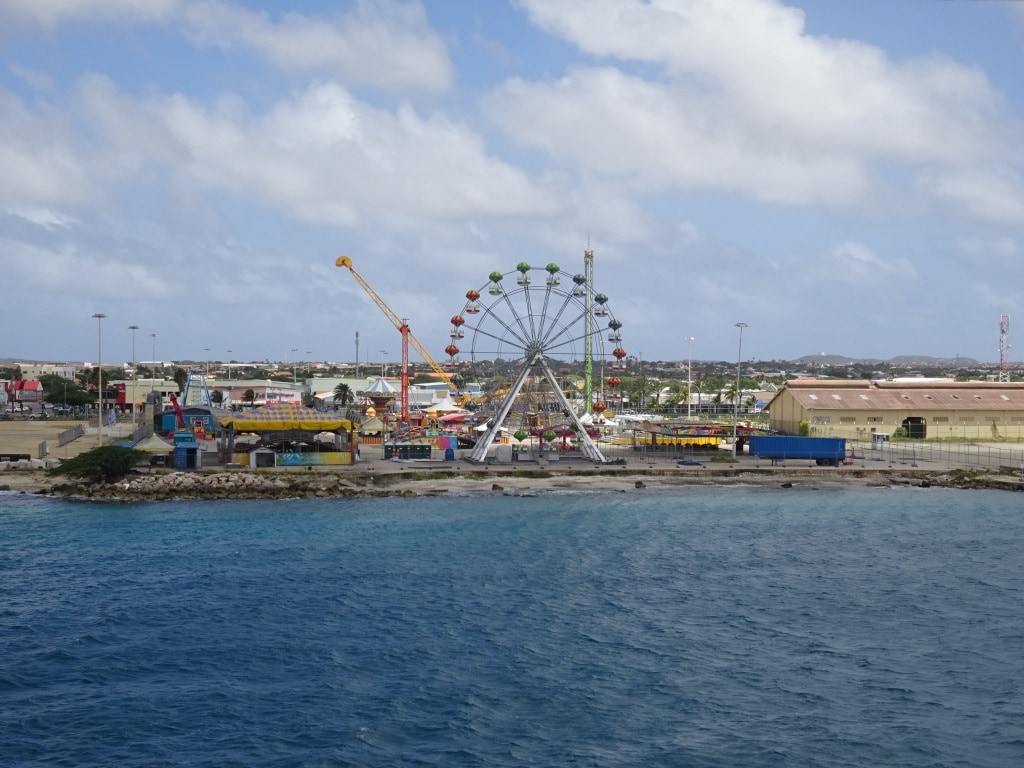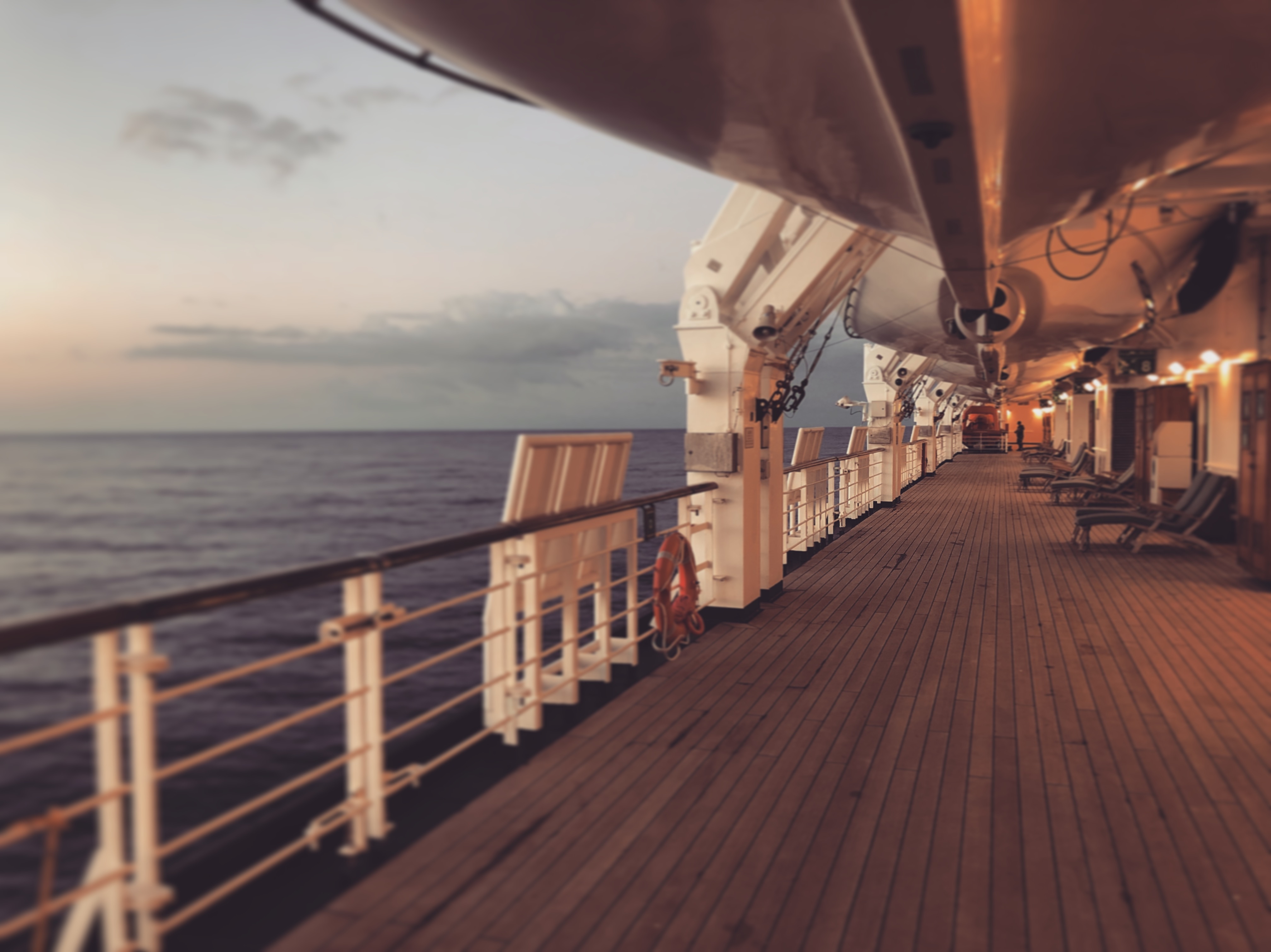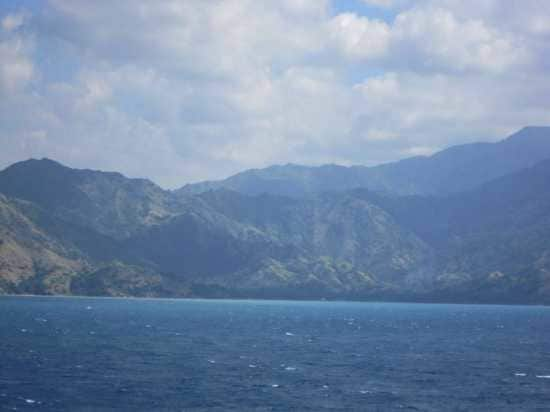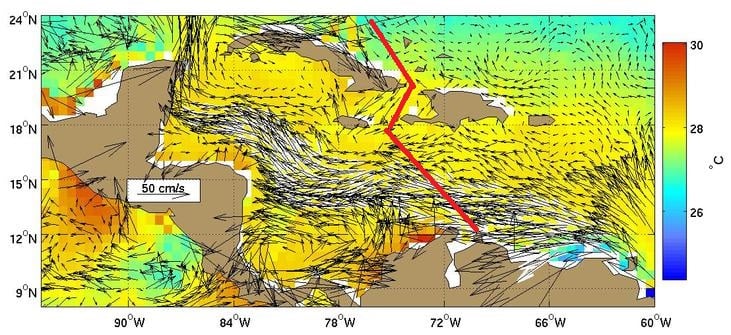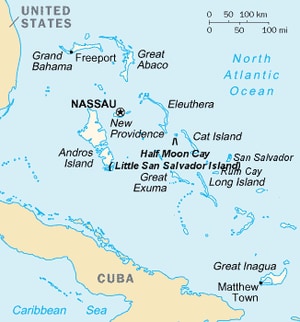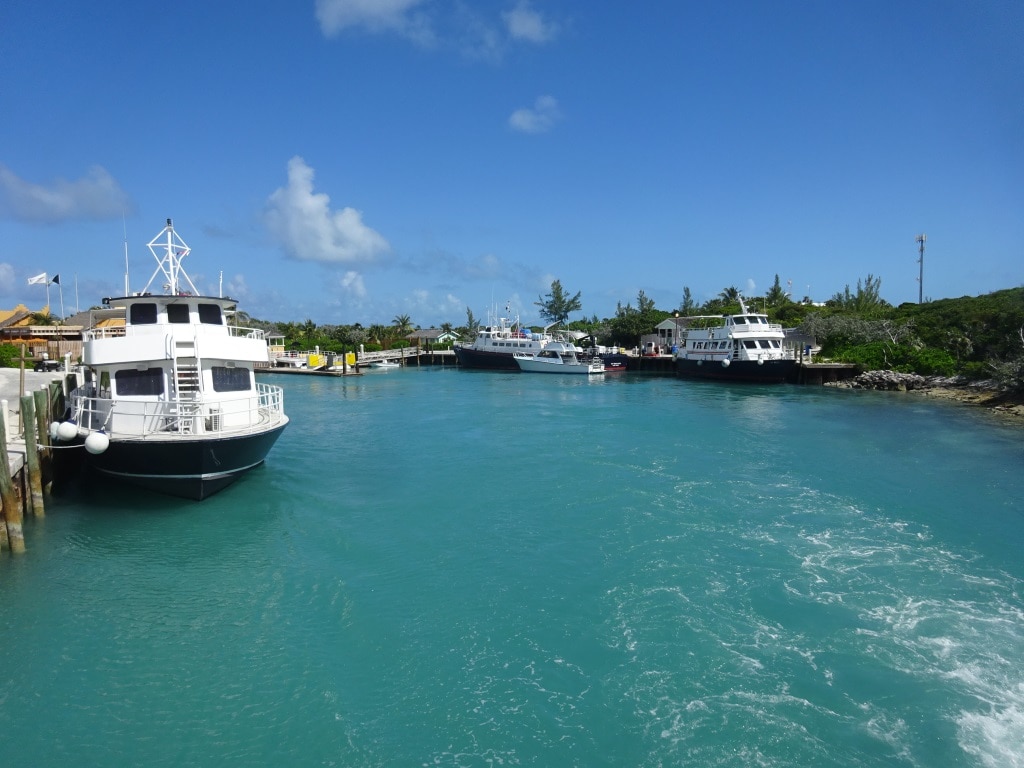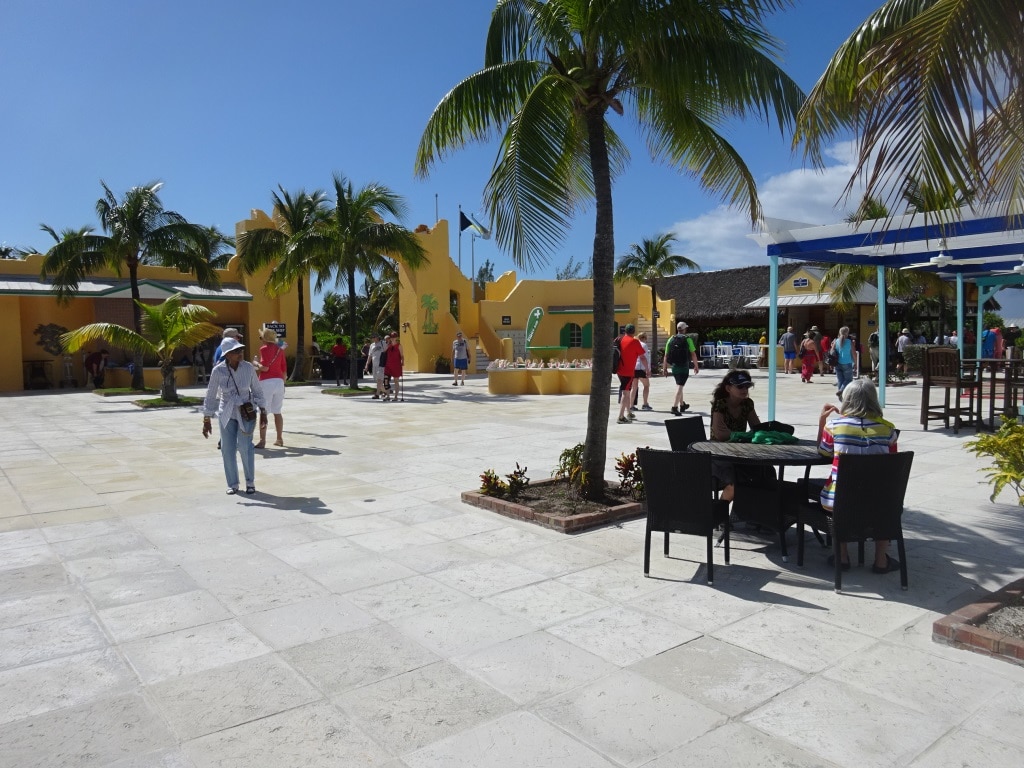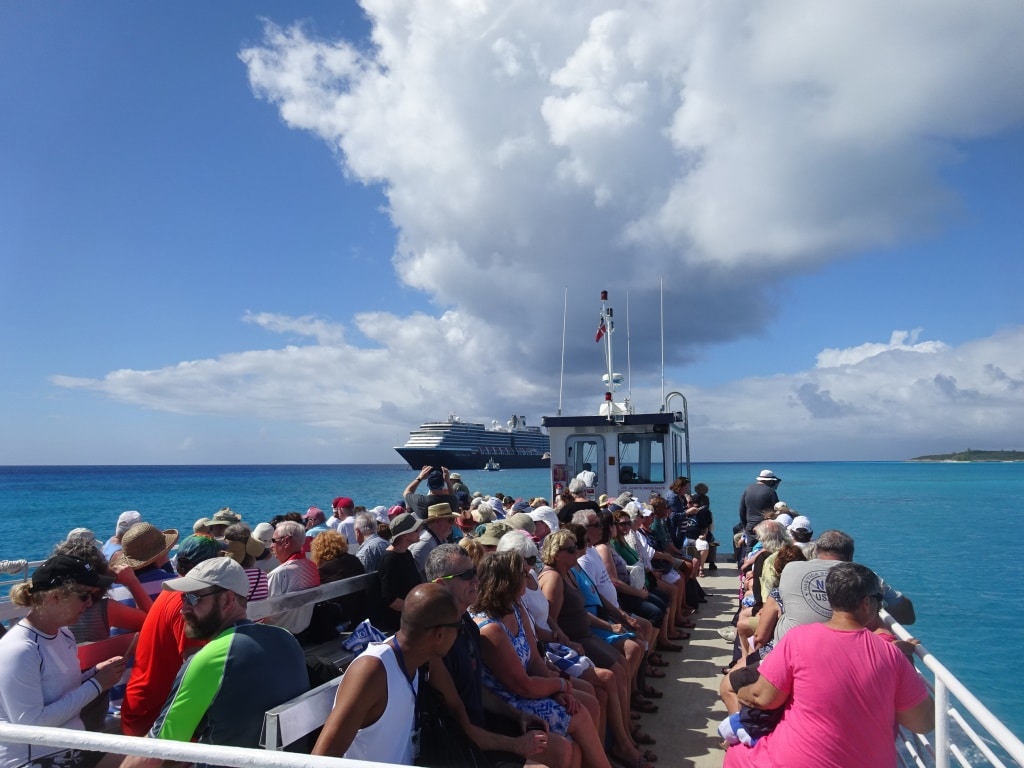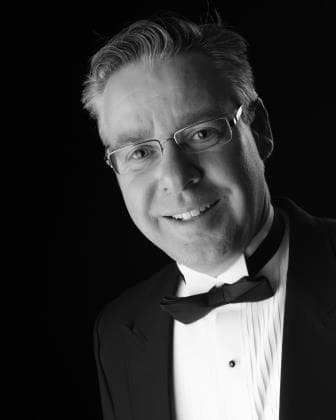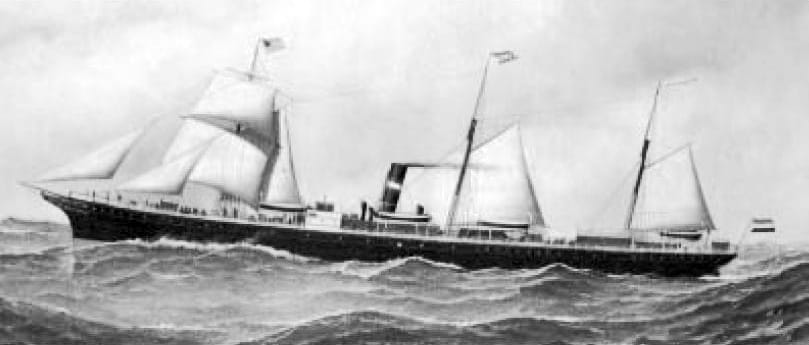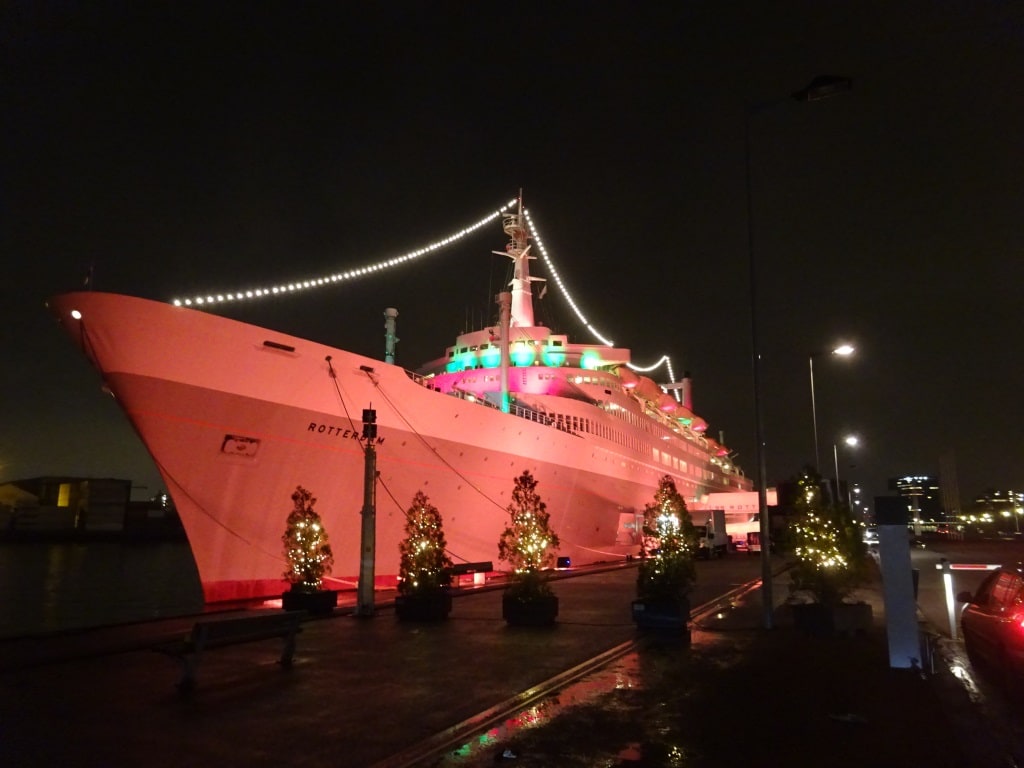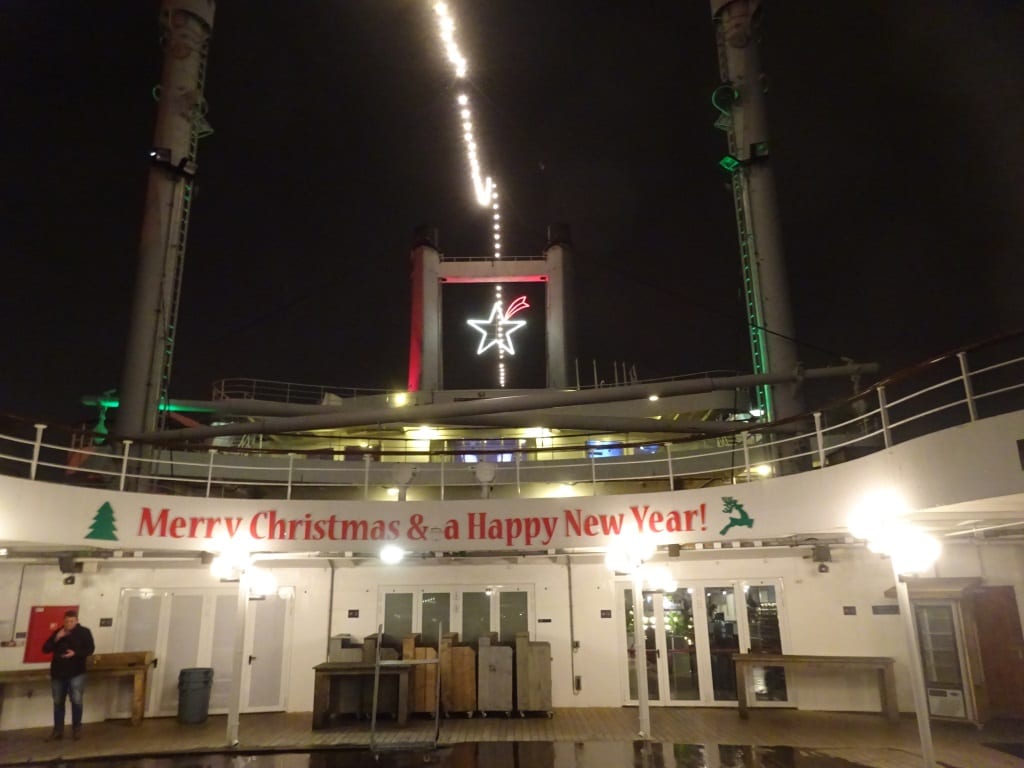As a continuation of yesterday; the plan to dock at 16.00 hrs. at Colon 2000 Cruise terminal did not work out. While the ms Zuiderdam did sail out of the canal on schedule, sailing back in through the breakwater near Manzanillo Container terminal did not work out as planned. Two container ships that were supposed to come in after us, sneaked ahead and that gave a delay of an hour. In principle it is quite unusual for a cruise ship that it has to wait for box boats but in Panama it is not. All over the world cruise ships always get preference but not in Panama. We are just a ship like all the others. The Panama Canal Authority and the surrounding container terminals make much more money from Container ships than from Cruise ships. Maersk Containers, the largest container company in the world pays nearly a $100 million in Canal fees during a year, while Holland America’s contribution is probably not much more than 2 million. So the focus is not on us but on the better clients. And thus we had to wait until the better clients were out of the way and we could sail in as well. But by 17.00 hrs. we had the gangway back out and the tour guests could return to the ship.
Then today we were in Costa Rica. Costa Rica is a beautiful country with lovely people but they have one problem, they do not seem to be able to build ports with proper breakwaters that keeps the swell out. When we dock on the west coast at Punta Arenas the captain says a lot of extra prayers for a low swell and here on the east coast it is the same thing. Hence ships captains do not like the port very much as it is one of those ports that we have to cancel quite frequently because a high swell prohibits us to go safely alongside the pier. Anchoring is not an option as the tender boats would have a hard time docking due to the swell as well. Either at the ship or at the shore, or at both.
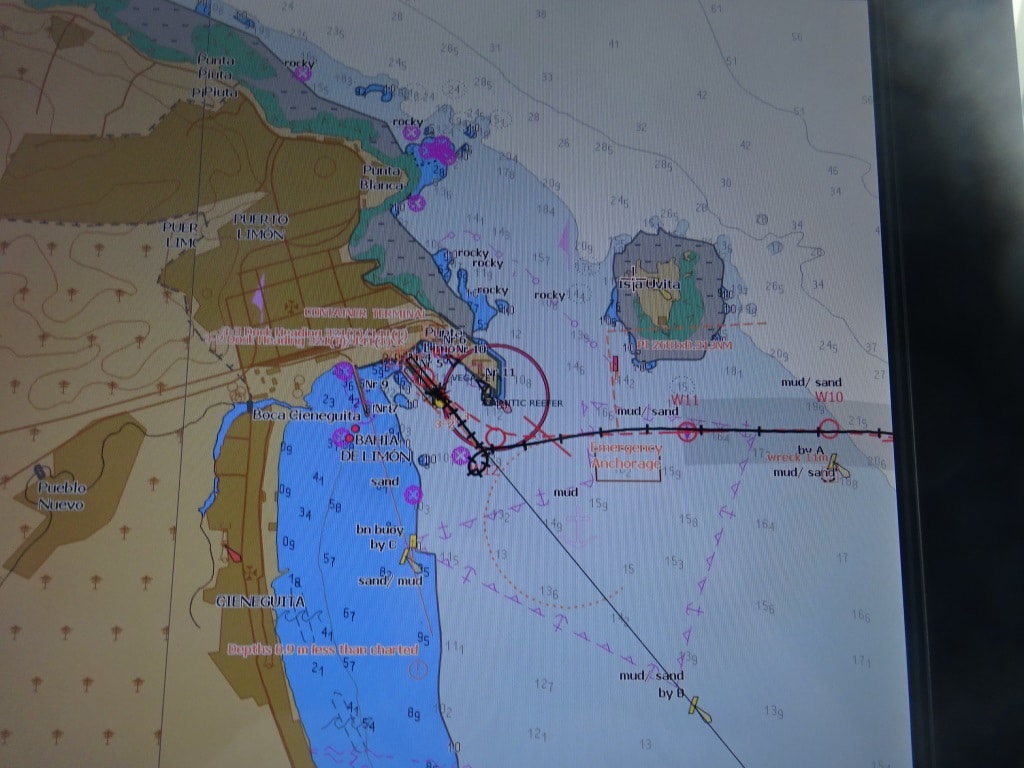
The black line is our way in. It has a loop because we swung on arrival to keep the bow into the swell and so reduce the ships movement.
Today it was half reasonable. There was a high swell running outside but the angle was just good enough for a natural rock formation and an island next to the entrance to keep most of the swell away from our dock and we had only about 1.5 foot at the dock. That movement is something the ropes can handle and it does not affect the gangway too much, so guests can safely walk on and off the gangway.
Puerto Limon and the same on the other side, Punta Arenas, are ECO stops. Our main reason to call is to give the guests the option to immerge themselves in Mother Nature. We also have very popular tours going to San Jose the capital of Costa Rica, where the focus is on culture and history, but mostly it is about wildlife. Costa Rica is blessed with large areas which are still pristine Tropical Forest and the Costa Rican Government has had the foresight to change large swaths of it into national parks. And I believe they are still adding to it.
Most of the tours are full day tours so they come back just before departure. Today that gave some challenges as there had been a severe accident on the main road and the buses were stuck behind the pile up. I have joined my ships several times in Costa Rica or went home from here and I observed that a larger number of Costa Rican drivers have a very peculiar attitude towards safe driving. In the way that they do not seem to care if there might be traffic coming from the opposing side. When they come across a car or a truck which is going slower than themselves, they simply start overtaking. Whether it is up the hill, down the hill, or just before a blind corner. While being transported by Taxi to and from San Jose airport I had the chance to observe that phenomena several times. And almost participated in that exercise myself twice. Only forcefully explaining to the taxi driver that a. he would not get a tip and b. he would be put on the black list by the agent, might have contributed to the fact that I am still around. The taxi driver and it happened twice, could not see my concern at all and invariably the remark was: Yes but he goes slow and I go fast…………………….
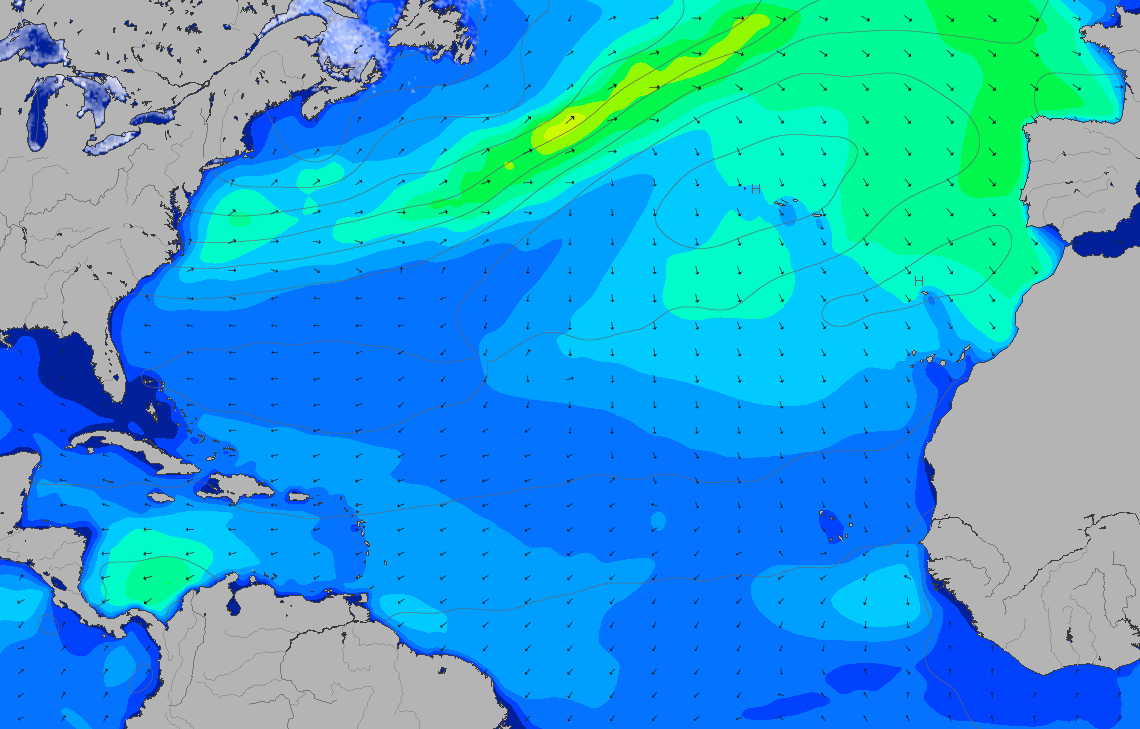
The green blob of high waves is still off the coast of Middle America and we are wobbling our way through it.
We will now have two days at sea to get back to Fort Lauderdale. The weather still looks a bit uncertain. It remains unsettled. So for the coming two days we will get the occasional rain shower, until we have passed Cozumel and it will remain wobbly as the strong wind keeps whipping the waves up.
